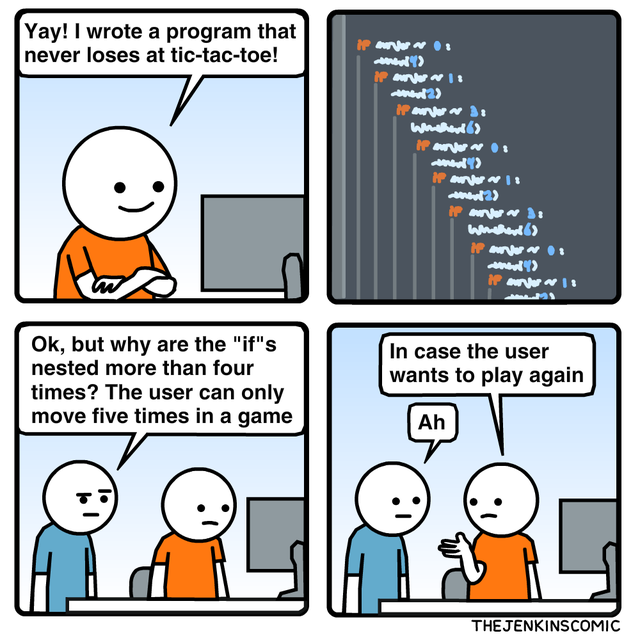Taming the Nested Beast
I believe that the downsides of overly nested code are well known and covered, it mainly revolves around readability and maintainability, and I won’t go into more details in regards to that.
I’d like to focus on the techniques to flatten an overly nested code, but before doing so, you should keep in mind that flattening your code isn’t always the answer, as it has some disadvantages as well, for example:
Expressiveness: In some situations, nested code can more accurately reflect the logical structure of the problem being solved.
Loss of context: When flattening code, you may end up creating multiple small functions, which can make it harder to follow the flow of logic and understand the context in which these functions are called. This might lead to a situation where developers need to jump between functions to grasp the entire process, which could decrease readability.

The Problem: Overly Nested Code
Consider the following Python code, which processes a list of data items and extracts a list of tuples containing the id and tag of each item based on specific conditions:
The value of the item must be greater than a given threshold.
The category of the item must be either “A”, “B”, or “C”.
The tags field must be present in the item.
The extracted tag must start with the string “important”.
1 | def process_data(data, threshold): |
While this code works, its deeply nested structure makes it hard to read, maintain, and debug. Let’s improve it by applying three flattening strategies.
Step 1: Embrace early returns
Reduce nesting by using early returns to exit loops or skip iterations when a condition isn’t met.
1 | def process_data(data, threshold): |
Step 2: Break it down
Divide the deeply nested code into smaller, more digestible functions or components. This promotes modularity and makes it easier to test and debug.
1 | def filter_item(item, threshold): |
Step 3: Rethink your logic
Sometimes, a simple change in your approach can reduce nesting. For example, try using maps, filters, or reducers instead of nested loops.
1 | def filter_item(item, threshold): |
In the final refactored code, we’ve flattened the nesting using early returns, broken it down into smaller functions, and rethought the logic using list comprehensions. The code is now more readable, maintainable, and easier to test.